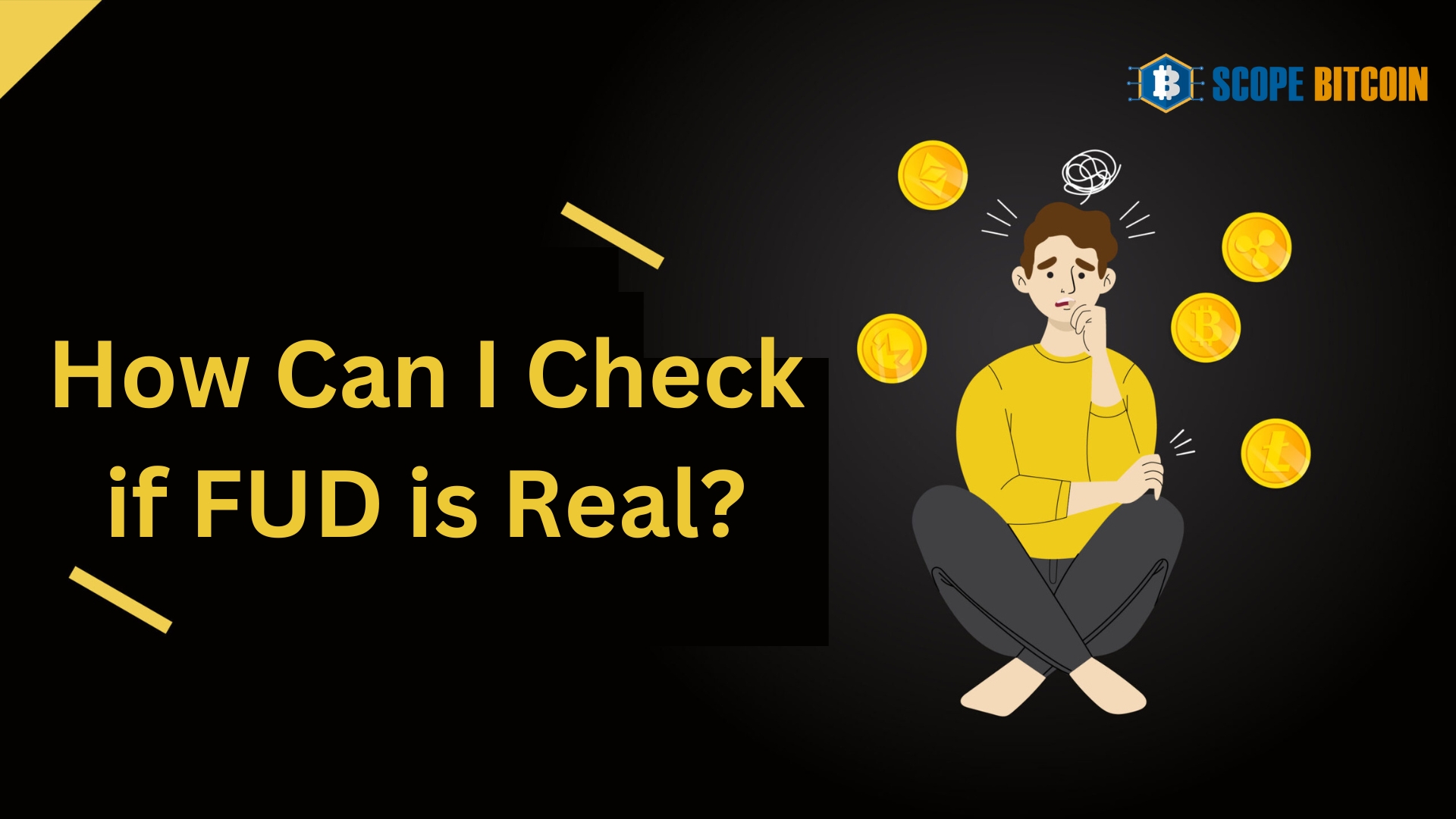
FUD in Crypto How Fear, Uncertainty & Doubt Affect Markets
FUD in Crypto, The metaverse would positively impact company operations, as the outline shows. Brands that have used metaverse technology for various purposes provide evidence of how the metaverse can revolutionize business. Metaverse business value estimations for other industries are intriguing and further proof of the technology’s promise.
Companies must study the best ways to use the metaverse to revolutionize traditional business structures. Learn the basics of the metaverse and then hone your abilities in metaverse technology to revolutionize your company. Using reliable training resources, begin becoming a metaverse professional for businesses.
How Does FUD Spread?
FUD most frequently spreads via social media and messaging apps in the cryptocurrency community. For instance, many altcoins in the cryptocurrency space allow traders to interact and talk about the token’s future developments in a Telegram group. Though beneficial, these communities can also serve as a forum for false information.
A cryptocurrency was beginning to parabolic below. A few Telegram channel members doubted the programming team’s sincerity, generating anxiety, worry, and mistrust. The sale of one large holding initiated the selling cascade. In just a few minutes, this young altcoin had gone from having a $3,000 market capitalization to $120,000. FUD was the driving force behind the crash, and the selloff happened even faster.
How did the FUD begin? It’s possible that those engaged were searching for a more affordable entry point. If so, they succeeded at everyone else’s expense. FUD can destroy a tiny market cap token. However, in the cryptocurrency space, doubt, anxiety, and dread can also impact projects with a higher market capitalization.
How Can FUD Impact the Cryptocurrency Market?
Misinformation and negative energy can exacerbate the volatility in the cryptocurrency market. Sometimes, the temporary effects of false positives only impact a small number of traders. In other situations, FUD may trigger panic selling, driving trading prices for cryptocurrency assets below what the market would ordinarily charge.
FUD and Market Volatility
The markets rise gradually, and profit-taking dips are common. However, doubt, anxiety, and uncertainty can make the market go differently or intensify downward moves that start with regular trade. One influential person’s negative tweet or a few remarks made in a group might send small-cap or highly volatile cryptocurrencies plunging.
FUD can cause market volatility even for well-known cryptocurrencies and large-cap stocks. After several Bitcoin exchange-traded funds (ETFs) were introduced, industry discussion shifted to the potential introduction of Ethereum ETFs. However, as rumors of an SEC probe into the Ethereum Foundation subsided, the ETH market’s anticipation for an ETF swiftly gave way to FUD. ETH and Bitcoin frequently trade in tandem.
Below, you can observe the point at which the two most popular cryptocurrencies started to diverge more due to fear, uncertainty, and doubt. Later, on now-verified speculation that the SEC will authorize ETH ETFs, ETH’s price surged.
Market swings like the ETH/BTC difference previously mentioned are the result of uncertainty and mistrust. But terror provokes a far more robust response. Vesting in crypto investors may cause them to panic and dump their holdings out of fear. News of the failure of the FTX cryptocurrency exchange surfaced early in November 2022.
The already troubled Bitcoin market plummeted much more quickly. However, Solana (SOL), one of the top cryptocurrencies, saw the most significant decline following the announcement. The perception that FTX was the primary driver of SOL’s price caused a substantial decrease in investor confidence and a panicked selloff by traders. Up until 2023, the market liquidated its SOL holdings nonstop.
FUD’s Influence on Smaller Markets
FUD can also affect larger markets, but corporations can easily influence smaller markets. People who sow doubt, anxiety, and fear sometimes demand a higher admission price. In other circumstances, they might be invested in a brief deal. The current crypto trading market supports leverage trading for relatively minor cryptocurrencies. Thus, someone with a sizable following can influence markets sufficiently to generate a sizable profit with some skillfully communicated FUD.
FUD’s Impact on Cryptocurrency
FUD occasionally even damages a project’s reputation. For instance, false internet information can harm a cryptocurrency ICO’s chances (Initial Coin Offering). FUD has the potential to affect the cryptocurrency market as a whole. Renowned investor Warren Buffett has a reputation for “fudding” the cryptocurrency market by forecasting a downturn for Bitcoin and other digital currencies.
False positive denial (FUD) can hinder a promising proposal from obtaining funding. Broadly speaking, financial pundits’ dissemination of doubt, anxiety, and dread can impede or even completely stop the public’s acceptance of digital assets.
How Can I Check if FUD is Real?
FUD could be a ruse that influences pricing. Tribalism or jealousy are some possible causes. Information that appears to be false, however, occasionally merits double-checking. If the FUD is based on accurate information, seeking methods to cross-check the information with other sources is a good idea.
Verifying Crypto Info
Even social media accounts with a vast following can create misleading information. Evaluate the source, but don’t let the follower count sway your opinion. Look for reputable sources within the crypto industry to verify the information or use a blockchain explorer to research transactions. The project page itself can be an excellent resource. If the level of doubt is significant, projects often post something to quell fears on their X page or website. Look for ways to verify that as well.
Blockchain Transparency Tools
Transparency is offered via the blockchain. You can often independently confirm information by looking at volume data, transaction data, and token contracts. You can locate transactions and wallet information with programs like Etherscan, Base Explorer, and Solana Explorer. Using tools like Token Sniffer, you may learn more about ERC-20 tokens, including holdings and liquidity.
Politely ask questions if you require further facts to support your independent research. But take care not to disseminate misinformation yourself. If certain groups ban “fudders,” you might not be able to access the community for your investment.
Crypto Tools and the Importance of Perspective
Messari, Token Terminal, and DeFiLlama are supplementary crypto tools that help enlighten you more about coins, chains, and tokens. But perspective is critical, and tools can help you get a bird’s-eye view. For instance, it is accurate to state that Solana’s total value locked (TVL) has plummeted since its high. Nevertheless, it disregards the remarkable recovery from the bear market’s lows that have occurred recently. Misinformation and false beliefs can coexist.
Identify Motivation and Intent
Attempts to manipulate prices often involve statements that sow seeds of fear, uncertainty, and doubt. The reasons for it, nevertheless, can differ. Suckers, individuals seeking a bargain, or con artists can all contribute to false positives and negatives. The second type is prevalent in alternative cryptocurrencies, especially meme coins.
One typical tactic to pull Thrugut from under a cryptocurrency project is to dump tokens at the top, use more accounts to sow fear and doubt, and then offer to “relaunch” the project. The scammers demand an investment of ETH or SOL as a seed and your useless old tokens so that they may purchase the “new” token. It’s a fraud; don’t send more cryptocurrency. It could be wise to sell the failing token into the liquidity pool to absorb the loss.
Conclusion
Fear, uncertainty, and doubt prevent rational decision-making regarding crypto trading. Cryptocurrency traders are especially susceptible to fear, uncertainty, and doubt (FUD) due to market volatility, the prevalence of social media discussions on cryptocurrency pricing and token prospects, and other factors. But before making a trade, there are usually multiple ways to check the facts. You should be suspicious if someone says they are bullish or bearish in a position you hold or are considering taking. Perform independent research as a student.









